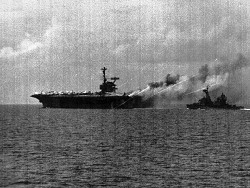
Make a nuclear tug to Mars?
Journalist Alexander Berezin — prospects for Russian interplanetary tug with a nuclear engine.
Alexander Berezin
The last few months one after the other, messages appear on the interplanetary tug with a nuclear reactor and ion engine, which since 2009 is being developed jointly by the Russian Federal space Agency and Rosatom. March 21 have been published, and data on first acceptance of fuel elements (TVEL) — rods with the fuel — for such a “space” reactor.
In the press this project is often presented as something unprecedented. As a decisive breakthrough, capable of resolving all the problems of humanity on the way to Mars. Technical experts go even further and say, “Space nuclear power installed is now possible only in Russia”. Whether so it and why do we need a project of this kind on the background of large numbers of conventional missiles that are not associated with the risk of launching radioactive materials into space?
Immediately after the first rockets on chemical fuel in the 1950s to designers all over the world come to understand: far on this form of transport into space to climb. The energy that rocket engines can give a spacecraft is associated with a lot of spent fuel and the square of the speed of its expiration. “Chemical” rockets of all conceivable types not to throw burning fuel faster than a few kilometers per second. So their starting weight from the fuel is 95 percent or more. Even for the flight to the moon had to create a rocket weighing thousands of tons, which made the expedition to her insanely expensive and essentially irreproducible for economic reasons. More distant manned flights on this basis will be much rasaritului.
Electric rocket engine (ERD) in this regard, much more promising. He is able to accelerate the ionized particles of the jet stream to tens of kilometers per second. Therefore, the amount of fuel discharged in such stream can be reduced in tens times or more. However, it requires an energy source, and solar panels are weak, because their power decreases proportionally to the square of the distance from the Sun and even in orbit around Mars, they are very weak. Because of all this for flying long distances it is more logical to bet on transport of nuclear reactors.
In fact, humanity has no choice: Homo Sapiens will either have to launch into space a nuclear reactor, or to refuse from flying to other planets, because the pure “chemistry” for this technically unsuitable. The question is not, will fly the ship with a nuclear reactor, but rather when it will happen and whose flag will be on Board.
All this was fairly obvious already in the beginning of the space age. Therefore, even in the 1960s the USSR had worked out the detailed design of the interplanetary spacecraft with a nuclear reactor with a capacity of 7 megawatts on Board.
With a heavy rocket into orbit was supposed to bring parts to build the reactor. Not to permaglide the ship, protected from the scattering of neutrons was planned just aft of the engine facing the habitable module with astronauts (“shadow protection”). Because cooling a reactor in space water cannot be used for the heat sink was assumed to use thin metal heat sinks with an area of hundreds of metres. For the reactor and heat sinks were situated modules with fuel for the landing and takeoff for other planets.
Politics killed the Soviet “Mars” project. After Kennedy started the moon race, Khrushchev ordered to shift to a flight to the moon, which in the end never took place. Portable reactors was used in the USSR only to power military satellites.
However, scientific research on interplanetary ships will not go away, and in 2006 the Russian Academy of cosmonautics named after K. E. Tsiolkovsky published the book”Piloted expedition to Mars”, which was rated the possible interplanetary missions. It was made logical conclusion that nuclear tug on ERD is the best choice for such flights, and the power of its onboard reactor should not be less than 15 megawatts. In this case, the total mass of the vehicle on four astronauts would not exceed 500 tonnes (slightly more than the ISS).
The modernization Commission under the President of Russia in 2009 adopted a kind of demonstration sample of the atomic tug. Instead of 15 megawatts, the reactor will have only one megawatt of power. He will not be able to bring people to another planet, but it will be quite suitable for towing spacecraft from low earth orbit to the moon and back.
The reactor itself is assumed rather unusual (gas-phase) and will work on fast neutrons. The heat from the rods of Fuel elements with highly enriched compounds of uranium will take a mixture of helium and xenon. Then the heated gas the fluid will power a turbine that produces electricity and low-grade residual heat will dissipate via panel radiators. The cooled gas is then again fed into the reactor, and the cycle repeats itself.
The main drawback of such solution is that of uranium-235 in the fuel mixture will be not less than 20 percent. In the event of an accident during takeoff, he will inevitably get into the atmosphere. However, the danger of this scenario is assessed as moderate. The main threat in case of accidents of reactors is not the uranium, and mastrodicasa the decay products, which the space vehicle reactor simply will not have time to work out. In addition, the megawatt reactor is simply a very small to contain a significant mass of radioactive material. In fact, in the Soviet era military satellites with reactors on Board ugaadi to Earth and catastrophic radioactive contamination because it has not happened.
In addition, the use of such “charged” fuel will lead to very high operating temperature of reactor systems. Materials for Fuel rods made from a specially created alloy based on molybdenum. Thus the design resistance of the new material will allow the reactor to operate continuously up to 100 000 hours — enough to reach Pluto.
By 2017-2018 the prototype reactor for deep space should be assembled and system tested in a Pine forest. By 2025, the project is expected to be ready for trial flight.
Rosatom’s management does not hide that the ultimate goal of the space tug is much bigger flights to the moon. His Chapter explicitly States: “Today’s cosmic set allow you to reach Mars within a year and a half without possibility to go back… Installation with a nuclear engine will allow us to reach Mars within a month and a half and come back”. Speed in deep space missions is also important because in a year or two of flight astronauts, according to the calculations, will receive more ionizing radiation than allowed by today’s standards.
Note that while the achievements of Russian nuclear reactor are at the forefront of scientific and technological development. U.S. government agencies currently have difficulty even with conventional chemical rockets. The experiences of the USA in the field of nuclear space engines although it cost two billion dollars, were suspended in the 1970s. today even they can’t be reproduced in a short time. Among other things, this requires the construction of large-scale infrastructure. Typically for US the cost of space programs, even more modest scale, it is difficult to imagine that the us government, without outside pressure will decide to implement something like that.
Although the draft of the first ever interplanetary nuclear tug at the moment strictly fit in the schedule, this, unfortunately, does not guarantee that it will ever be used for flights into deep space. While the cost of R & d on tow by global standards, insignificant — 17 billion rubles up to 2018. USA on the development of an ordinary chemical rocket SLS has already spent, according to various estimates, from 11 to 19 billion dollars.
However, the handset, created in the context of future missions to the moon, may remain unclaimed. At the moment Roscosmos is not planning to create a lunar base in the foreseeable future. Remains a mission to Mars, but it requires a ship with a much more powerful reactor. In the transition from R & d to build a full-scale and not of experimental tug costs rise sharply.
Besides, even megawatt power reactor for spacecraft and associated systems is a complex, multi-ton product. Even though it is much cheaper than any other means of long-distance flights, it will require billions of dollars. Of course, on the background of the space Shuttle program, which cost as flying to the moon, this figure may seem insignificant, however, and the financial capabilities of Russia and the USA are at a disproportionate level.
Virtually all serious observers doubt that Russia is currently not in the best of economic “form”, can be resources for the construction and full utilization of the nuclear tug. We will remind, today the Russian Federal space Agency annually receives less budgetary funding than the Federal penitentiary service. Even in Soviet times, when the situation with financing of space was slightly better, the top political leadership decided on the construction of such apparatus.
In 2015, Deputy Prime Minister Dmitry Rogozin has expressly voiced a similar opinion: “we Need to understand why we have to fly to the moon and Mars. Ambition is useful, but now need money to save.” Specifically, if the country, saving money, consider going to Mars as “ambitions” rather than as a meaningful scientific task, the realization of such a flight, in practice, can not wait.
At the time of the start of the program in 2009, the cost of it didn’t seem so serious problem. One of the NASA officials — Edward Crowley was right to say that maybe some cooperation between the US and Russia, for example, for joint flight to Mars Russian nuclear tug. It is clear that if the US took over considerable part of the costs, the Russian side would be able to bring it to orbit and prepare for flight. In the end, this is the scheme (“your money — our missiles”) the American astronauts, while not having their ships fall to the ISS. What hinders to copy this approach to interplanetary travel?
Unfortunately, today the prospects of cooperation between Russia and the U.S. very, very foggy. Due to the known confrontation that escalated to 2014, now beyond the ocean of people fired from their jobs just for the kind words about the Russian rocket engines. How can you expect cooperation on much more important area, it is not entirely clear.
I will add that it’s not just about the purely political confrontation. A significant part of the American elite views Russia as something of a huge husseinovich Iraq, autocracy in the stage of decline and decay. To us it sounds rather funny, but for the Western world this is a perfectly reasonable position. All this makes questionable the close cooperation that is necessary in order to realize a flight to Mars.
Thus, it is quite thoughtful and the most realistic of the available project funds for long space flights has the serious drawback that it is not visible clear sources of funding. Russia can create and test experimental nuclear space tug as planned, but do they have enough funds to independent long-distance space flights — at the moment not clear.
http://lifenews.ru/news/193277







